The fun of DIY sampling gear and equipment: building longlines and BRUVs for our sampling campaigns
The first semester of 2024 was full of activity for our team. Like ants at work, everyone had a role to play in the planning, designing, and building of the BRUVs and longlines that are needed to sample Bahía de la Ascensión and Laguna Yalahau, searching for newborn and juvenile sharks and rays.
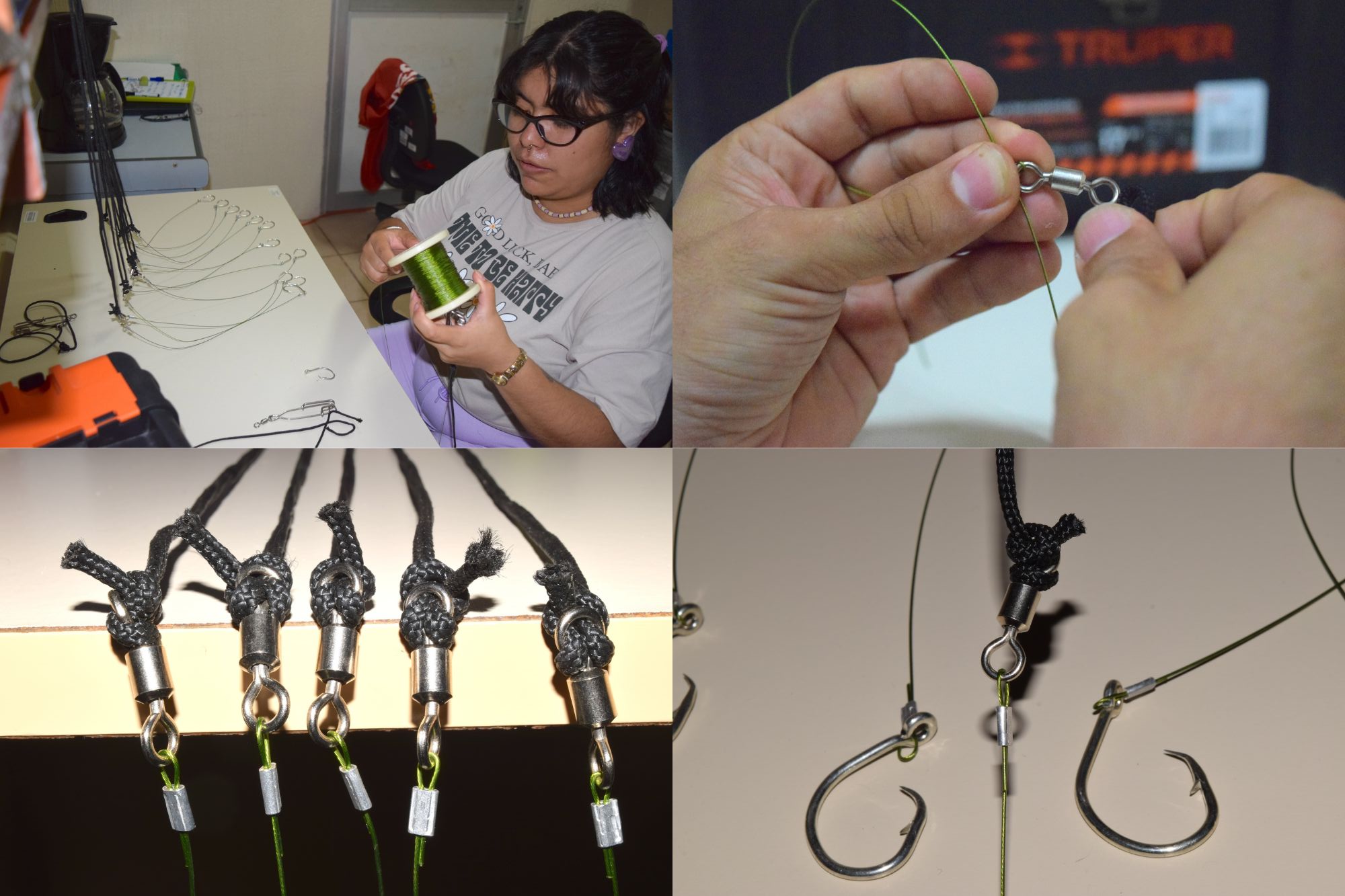
Building longlines implies cutting and tying up many small parts to make the gangions (the “fishing” parts of a longlines). Top left: BSc student, Areli Solís, cutting 40-cm sections of stainless-steel cable. Photo ©Andrés Navarro. Top right: a swivel makes sure that fish do not entangle the gangions. Photo © Areli Solís. Bottom left: The steel line is tied to a polyethylene line to make the gangion. Photo © Areli Solís. Bottom right: a 12/0 circle hook helps ensure fish do not swallow the hook. Photo © Areli Solís
PhD students Andrés Navarro (Colombia) and Sarah Martínez (Reunion Island, France) searched the literature to select potential designs that we could use or adapt to our needs. Then came the tedious work of buying all the materials and parts needed for the construction of the equipment; this task obviously fell into my lap. Since Chetumal (home base), is a rather small city, we had to travel 400 km to Progreso, Yucatán to find all the fishing parts and materials needed for our longlines. Our 50-hook longlines are made with 300-m long threaded-nylon main lines, and equipped with 1-m gangions that have 2 swivels, a clip, and a 12/0 circle hook. A buoy is placed every 10 gangions, and there are small anchors at each end of the main line.
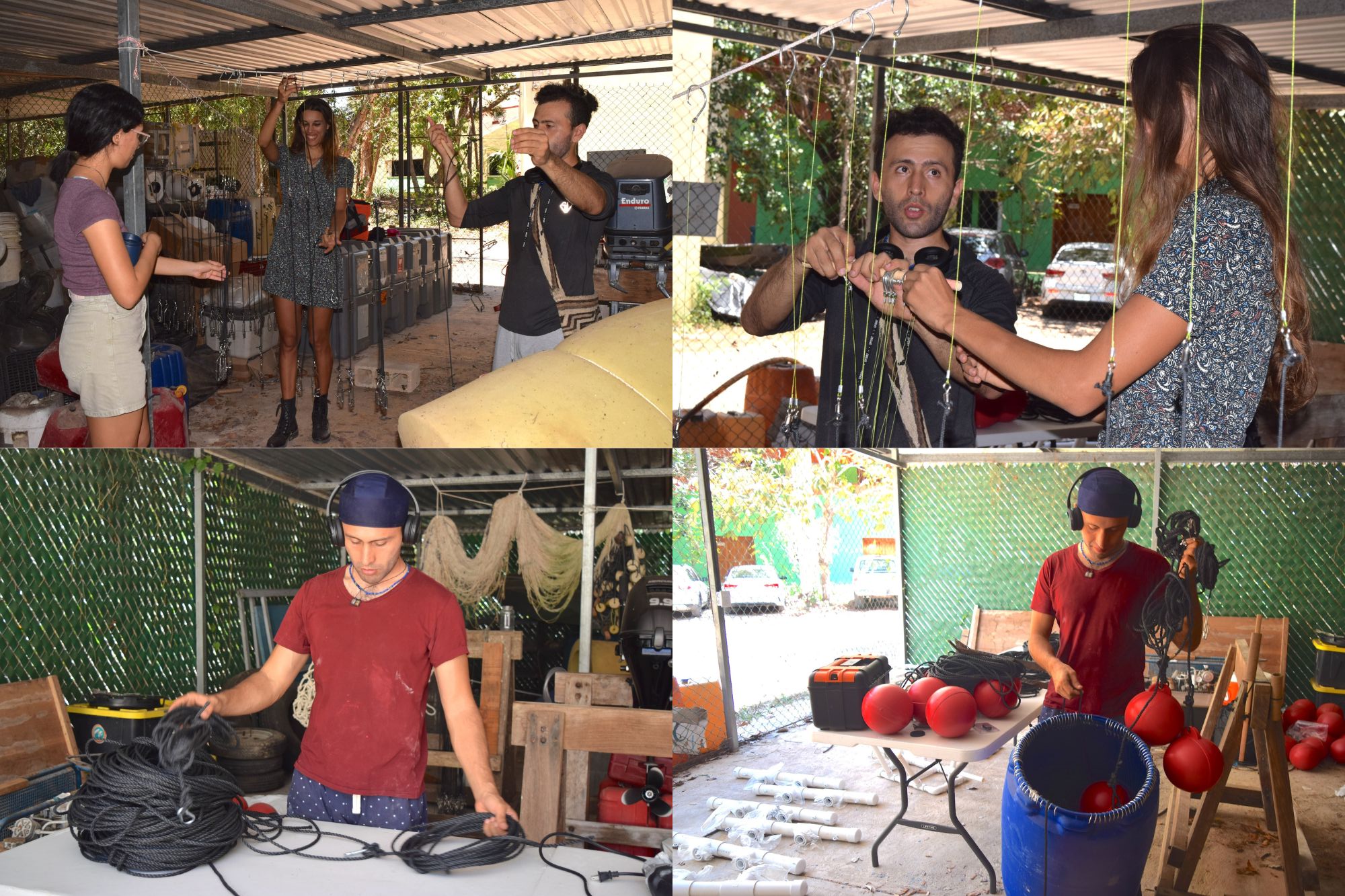
Everybody in the team helped out building our DIY longlines. Top: MSc student, Mara Espinoza, and volunteer, Sarah Martínez, help PhD student, Andrés Navarro, check each of the finished gangions that will make the longline. Bottom left: Andrés, who will be lead the longline surveys in Bahía Ascensión, measures and checks the mainline of the longline. Bottom right: the finished longline is stored for transportation and deployment on a plastic barrel. All photos © Areli Solís
The BRUVs we built are made of 1” and 2” PVC plumbing pipes, and all sorts of PVC joints. We based our BRUVs on a design reported in a study of artificial reefs by Murdoch University in Western Australia. Ours, are slightly larger and taller than the original design, and we substituted the bait-bag with a sturdy bait-holding PVC capsule. Finally, we filled the two “skates” where each BRUV stands, using concrete. This was let to dry and then closed with caps, so that the BRUVs can sink easily and stand firm in the sea-bottom.
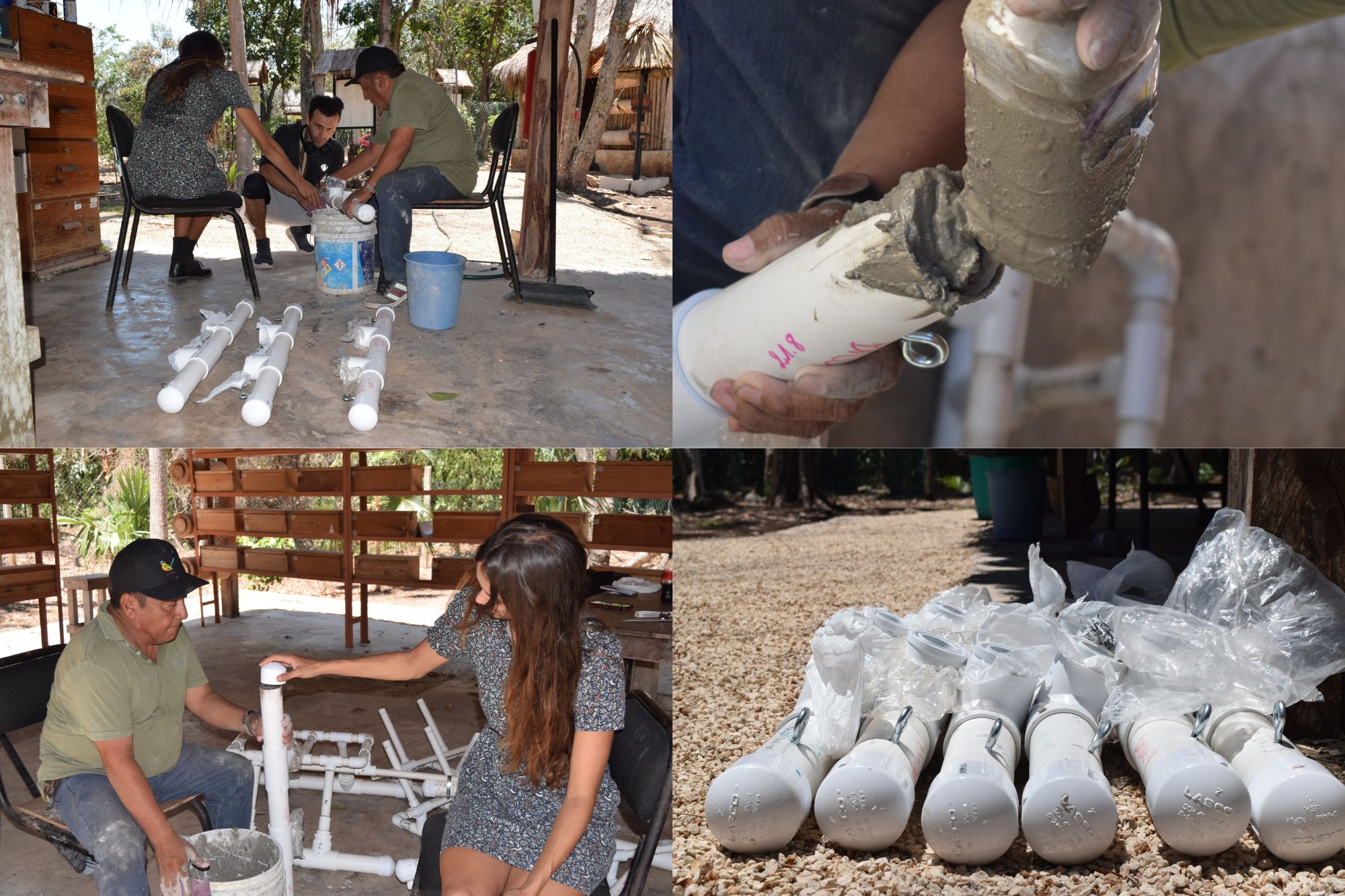
The bases of the BRUVs were filled with concrete so they stay put when we placed in the sea bottom. Once the concrete was dry, the bases were sealed with a cap. Our skillful technician, Margarito Tuz, helped out preparing the concrete and filling the bases. All photos © Areli Solís
MSc student Mara Espinoza, BSc research student Areli Solís, and volunteers Rubén Aguilar and Paola Maldonado helped Andrés and Sarah in the multiple tasks Involved in building the longlines and BRUVS: measuring, cutting, gluing, filling with concrete, etc. We also received the kind help of many of ECOSUR’s technicians that helped us solve some of the many challenges posed by building our own equipment.
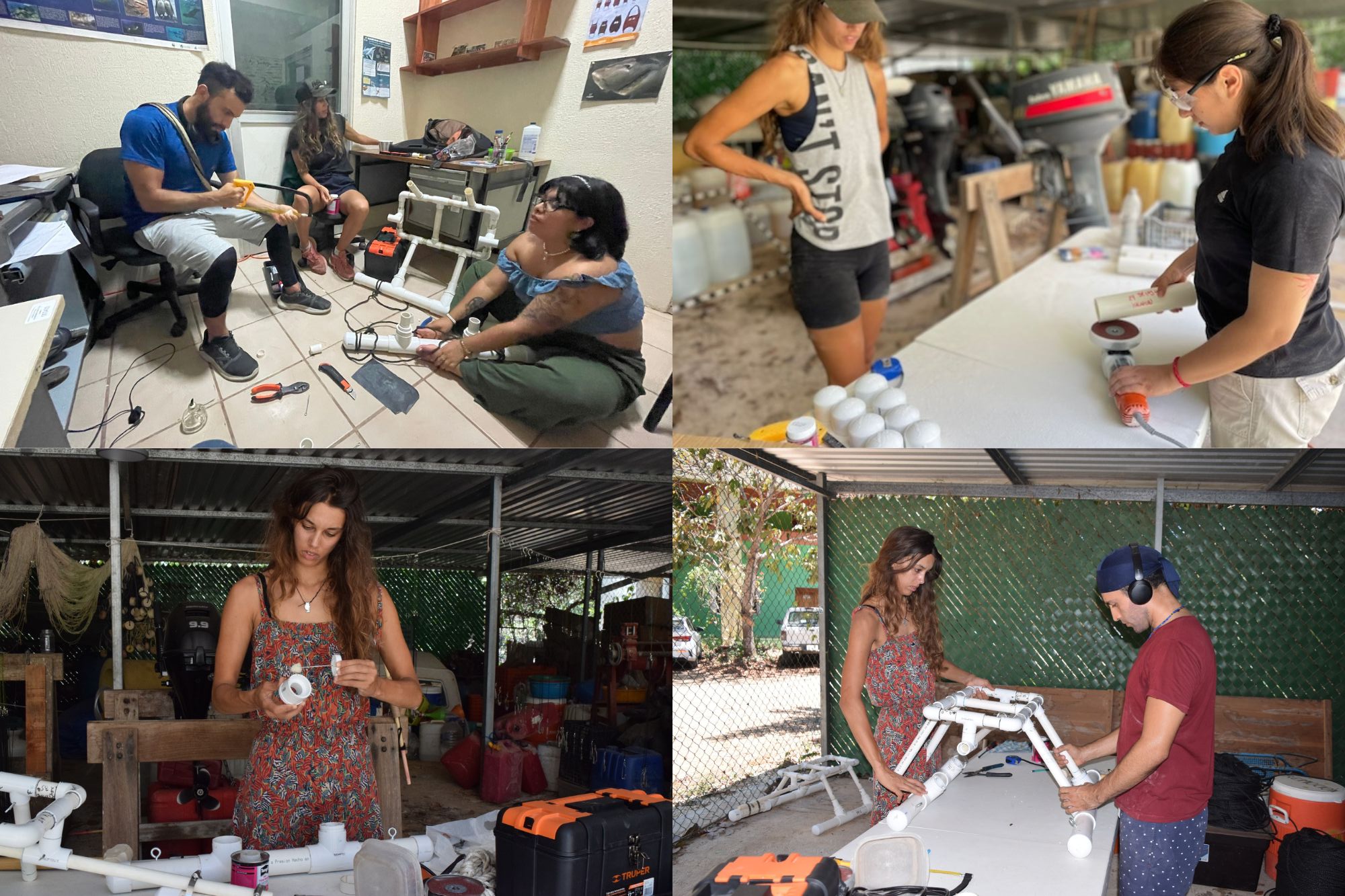
Making the BRUVS was also a team effort. Careful design, measuring, cutting, and gluing, had to be done for the PVC pieces to fit together for our BRUVs. Top left: Andres, Sarah and Areli measure and cut some pieces. Top right: volunteer, Paola Maldonado, grinds the fitting ends of the PVC pipes. Bottom left: Sarah glues together a piece of the BRUV. Bottom right: Sarah and Andrés finish putting together one of our BRUVs. Top photos © Mara Espinosa, Bottom photos © Areli Solís
The advantages of making your own equipment is that you save a considerable amount of money and have the freedom to make them fit your particular needs. The disadvantages are a lot of hard work you have to put on, and the risk that something goes wrong in the field; although to be honest, this last risk is not guaranteed to be avoided by buying commercially-available longlines and BRUVs, it is natural part of field-work!
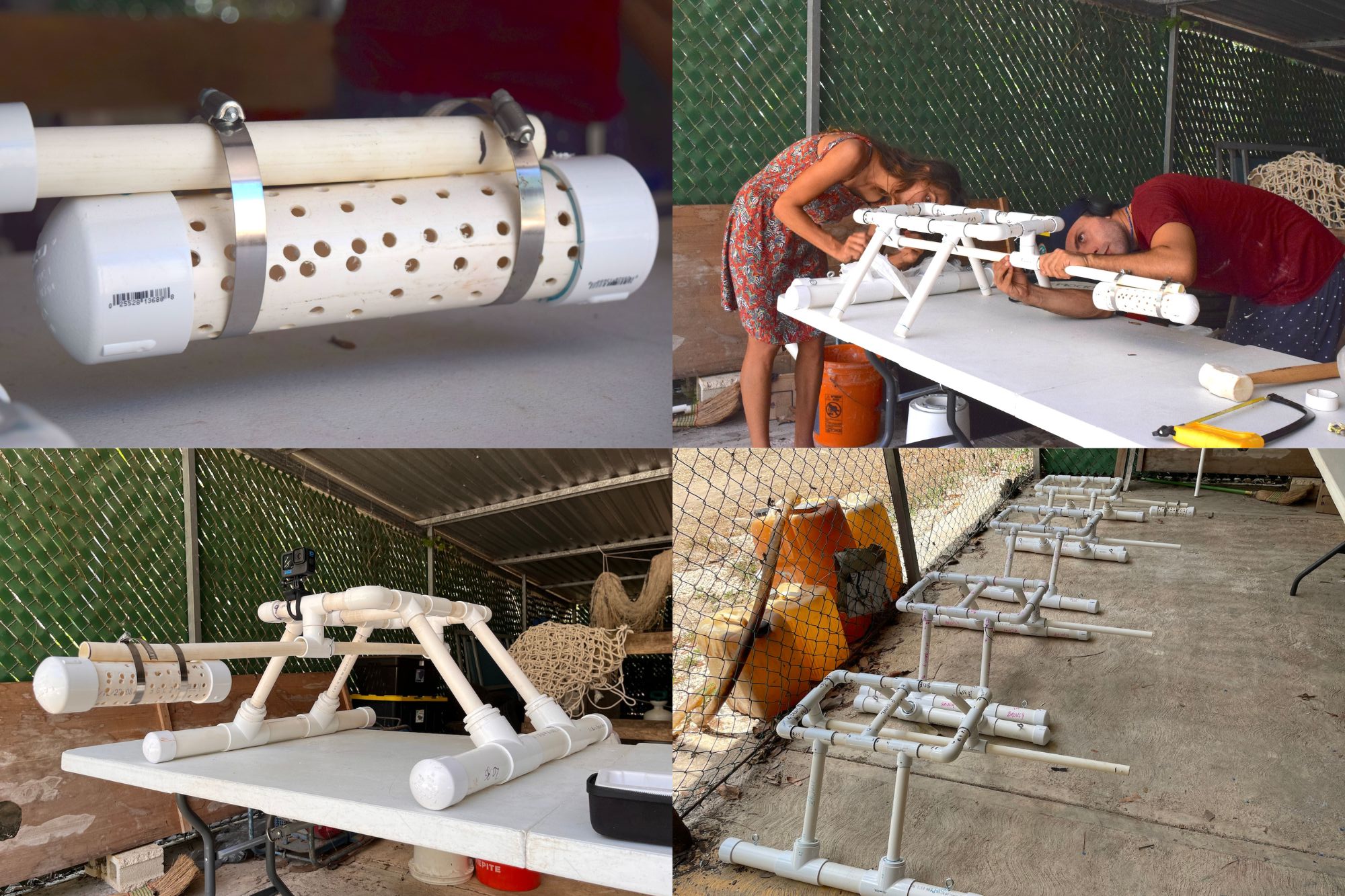
We improved the original design of the BRUV by replacing the bait-bag with a proper bait-case made with PVC pipes, and by making them easy-to-mount and easy-to-transport. Top left: the bait-case. Top right: Sarah and Andrés fitting the bait-case arm to the frame of the BRUV. Bottom left: a BRUV finished and fitted with a GoPro camera on top. Bottom right: four dismantlable BRUVs ready to go! Top and bottom right photos © Areli Solís, bottom left photo © Sarah Martinez
After a few months of busy work, by late April we finally had our first longlines and BRUVs ready for the study! The next challenge was to try them in the field and see how they performed. But I will tell you all about this, in another blog… Stay tuned!
